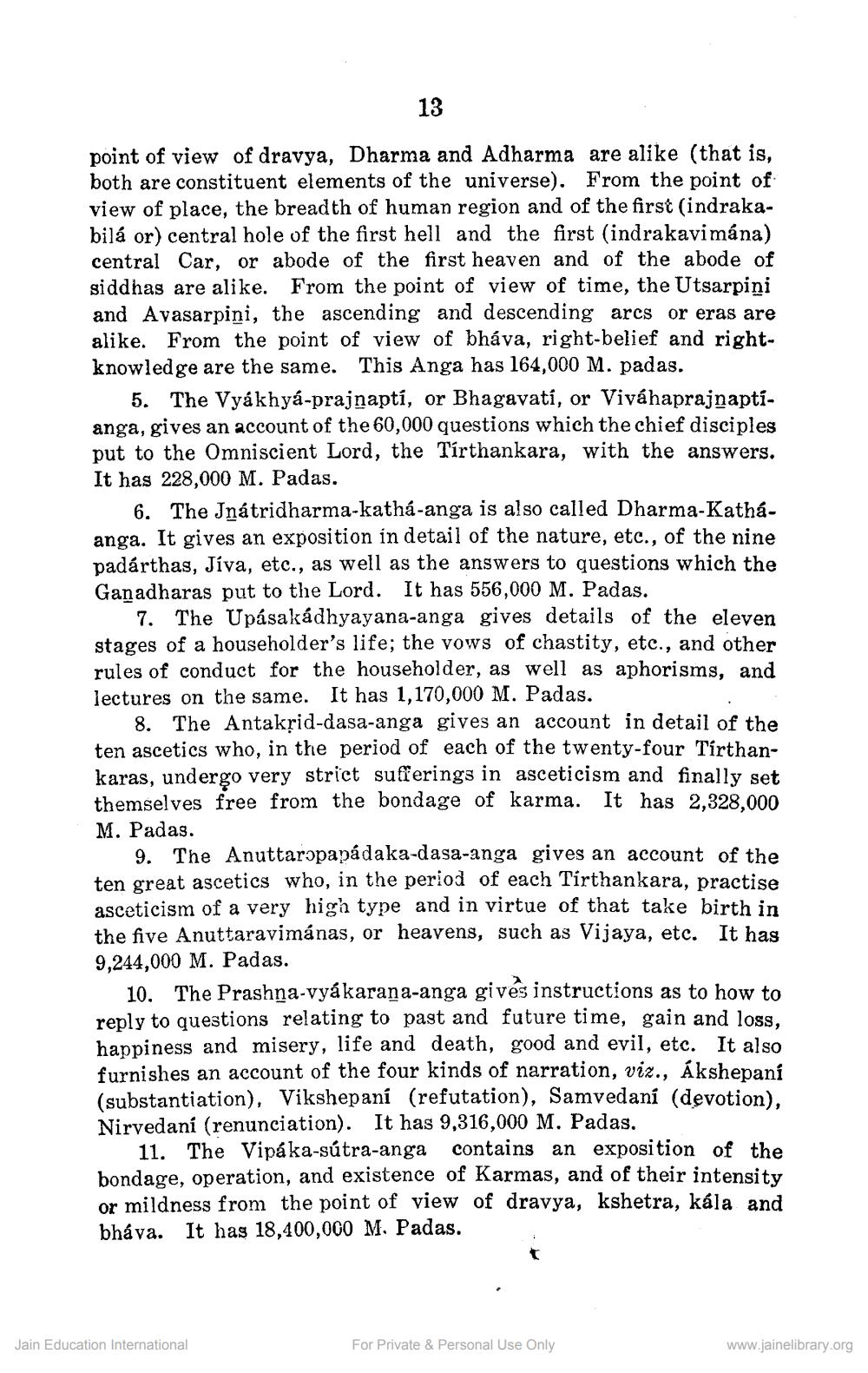________________
13
point of view of dravya, Dharma and Adharma are alike (that is, both are constituent elements of the universe). From the point of view of place, the breadth of human region and of the first (indrakabilá or) central hole of the first hell and the first (indrakavimána) central Car, or abode of the first heaven and of the abode of siddhas are alike. From the point of view of time, the Utsarpiņi and Avasarpini, the ascending and descending arcs or eras are alike. From the point of view of bháva, right-belief and rightknowledge are the same. This Anga has 164,000 M. padas.
5. The Vyákhya-prajnaptí, or Bhagavati, or Viváhaprajnaptianga, gives an account of the 60,000 questions which the chief disciples put to the Omniscient Lord, the Tirthankara, with the answers. It has 228,000 M. Padas.
6. The Jnátridharma-kathá-anga is also called Dharma-Kathaanga. It gives an exposition in detail of the nature, etc., of the nine padárthas, Jíva, etc., as well as the answers to questions which the Ganadharas put to the Lord. It has 556.000 M. Padas.
7. The Upásakádhyayana-anga gives details of the eleven stages of a householder's life; the vows of chastity, etc., and other rules of conduct for the householder, as well as aphorisms, and lectures on the same. It has 1,170,000 M. Padas.
8. The Antakrid-dasa-anga gives an account in detail of the ten ascetics who, in the period of each of the twenty-four Tirthankaras, undergo very strict sufferings in asceticism and finally set themselves free from the bondage of karma. It has 2.328.000 M. Padas.
9. The Anuttarɔpapádaka-dasa-anga gives an account of the ten great ascetics who, in the period of each Tirthankara, practise asceticism of a very high type and in virtue of that take birth in the five Anuttaravimánas, or heavens, such as Vijaya, etc. It has 9,244,000 M. Padas.
10. The Prashna-vyákarana-anga gives instructions as to how to reply to questions relating to past and future time, gain and loss, happiness and misery, life and death, good and evil, etc. It also furnishes an account of the four kinds of narration, viz., Akshepaní (substantiation), Vikshepaní (refutation), Samvedaní (devotion), Nirvedaní (renunciation). It has 9,316,000 M. Padas.
11. The Vipáka-sútra-anga contains an exposition of the bondage, operation, and existence of Karmas, and of their intensity or mildness from the point of view of dravya, kshetra, kála and bháva. It has 18,400,000 M Padas.
Jain Education International
For Private & Personal Use Only
www.jainelibrary.org




